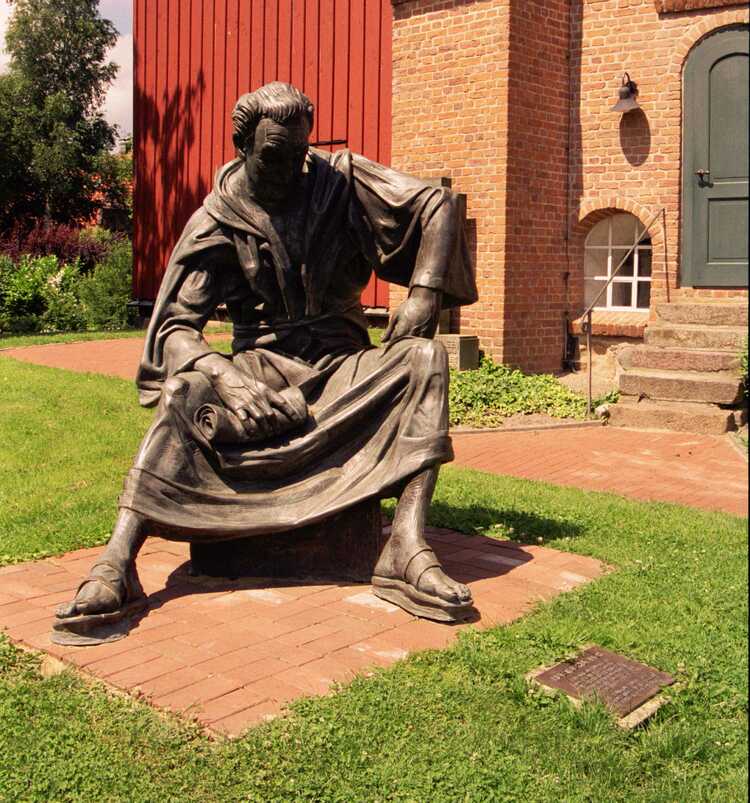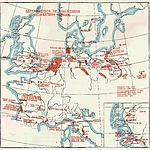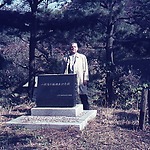The knowledge and expertise acquired over the centuries in land reclamation and development of polders in the Netherlands have led to the Dutch traditionally being involved in such projects abroad. In his book Dredge-drain-reclaim, the art of a Nation, Johan van Veen provides an overview of the areas in Europe where the Dutch have been involved in land reclamation. Overviews of these activities are also included in the books Man-made lowlands. History of water management and land reclamation in the Netherlands edited by Van de Ven, Water in the Netherlands edited by Huisman and The influence of Dutch engineers on water management in Europe, 1600-2000 by Helga Danner et al.
In this contribution I would like to mention a few characteristic examples of these activities. The first mention does not so much concern development of polders, but rather the reclamation of peat areas. It concerns Priest Heinricus, originally from Rijnsaterswoude, who with a group of colonists in 1106 reclaimed peat areas northwest of Hamburg. A statue of him in Steinkirchen commemorates this. A similar statue stands in Rijnsaterswoude. Many well-known Dutch hydraulic engineers have since followed Priest Heinricus.
In the 12th and 13th centuries, large-scale land reclamations were carried out by Dutch colonists in England around the Wash Bay. In addition to further reclamations in Northern Germany, there were also similar reclamations in the Weichsel delta in Poland and even in Russia. Such reclamations, which were later increasingly accompanied by development of polders, continued until the 18th century.
Since the end of the 16th century, it was not so much more colonists but more different Dutch experts who became involved in various land reclamation projects, initially mainly in Europe, but later increasingly worldwide. Some experts who played a role in this were Cornelis Jansz. Allerts, Christiaan Becker, Quirinus Indervelde, Jan Adriaensz. Leeghwater and Jan Claesz. Rolwagen in Germany, Cornelis Vermuyden in England, Humphrey Bradley and Jan Adriaansz. Leeghwater in France, and Cornelis Janz. Meijer, in Russia Jan Pieter van Suchtelen and in Spain Cornelis Krayenhoff.
Some examples of recognition of the contribution by Dutch experts can be found in England, where the King was so impressed by Vermuyden's achievements that he ennobled him. In France, the reclamation of the Marais Vernier along the Seine was completed in 1633. The main dike was named Digue des Hollandais. Polders in the Marais de Lesparre were called Polders de Hollande. The drainage of marshland in the Marais Poitevin was greatly improved by the construction of a 24-kilometres long canal, the Ceinture des Hollandais. In the Danube Delta in Romania there is a Digul Hollandesi. In Canada there are several polders in the Holland Marsh. By the way not named after a Dutch expert, but after a British expert with a Dutch name.
Although most projects were successful, there were also several failures. For example, it is mentioned that in 1627 Christiaan Becker succeeded in draining a number of lakes in Germany using ring dikes and windmills. The reclamations were successful, but the costs were about four times as high as estimated. Becker was declared bankrupt and the works were inundated again in the same year as a result of the war that was raging in Germany at the time. The embankment of a 46 kilometres long sea arm also ended in failure, with much Dutch capital being lost.
In Asia, Dutch experts have been involved in particular in land reclamation in Japan. Examples include Dick Arnst, Cornelis van Doorn, George Escher, Pieter Philippus Jansen, Isaäc Anne Lindo, Johannis de Rijke, Anthonie Rouwenhorst Mulder, Adriaan Volker and Johannes Westerwiel. In China, they were F.J.M. Boudrez, Johannis de Rijke and N.A. van den Heuvel. Jan Homan van der Heide provided advice on water management in the Central Plain in Thailand. He was also the first Director-General of the Royal Irrigation Department. In other words, the Thai Rijkswaterstaat.
More recently, various Dutch consulting firms have been involved, initially mainly in the context of development cooperation, but increasingly in the context of commercial assignments, in land reclamation in China, Indonesia, North and South Korea, Russia, Senegal, Singapore, the USA and Venezuela. In addition, various manufacturers supply equipment for the maintenance of watercourses, dredging equipment, sub-surface drainage machines, pumps, various types of movable weirs, etc. Some contractors carry out large-scale dredging work under difficult conditions and small-scale specialized dredging work worldwide.
United Nations organizations such as the Food and Agriculture Organization of the United Nations (FAO), UNESCO and the World Meteorological Organization (WMO), as well as several other international organizations such as the World Bank and the Asian Development Bank, gratefully make use of Dutch experts to staff their land and water divisions.



